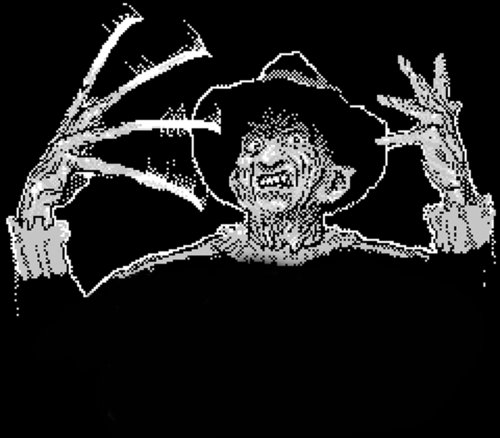This article originally appeared in The Peak. This was a major personal blow, really. People close to me know how serious I am about Avatar: The Last Airbender, and how often I call it one of the most enjoyable, well made pieces of fiction I have ever encountered. It’s funny, romantic, exciting and one of my favorite things ever. To see it so poorly interpreted was hard to watch.
M.Night Shyamalan’s The Last Airbender blows.
But seriously folks, to talk about this film is to talk exclusively about its utter failure. By now the entire planet has come down on Shyamalan and is loudly plotting his violent demise, both for committing a Hague convention-worthy crime against filmmaking and for the full-ceremony desecration of a franchise that many have strong feelings for. Those attached to both the series and to good filmmaking are going to be reaching for the nearest halberd and dialing for airline tickets post-haste.
Avatar: The Last Airbender was a series on Nickelodeon that ran for three seasons. While aimed at 10 to 14-year-olds, it is easiest to categorize the achievement of co-creators Michael Dante DiMartino and Bryan Konietzko (and head writer Aaron Ehasz) as a kind of small-screen Pixar. While aiming at a young demographic, they created a series that is not only completely entertaining, but empirically well made. Between its canny sense of humour, outstanding character work, and grand scale, it’s a fantasy series that not only deserves the title of Tolkien-esque, but demands it. Shyamalan managed to take something that would have been fine as a word for word reenactment with real people and sucked every ounce of life from it. It’s art murder and he is a criminal.
The Last Airbender tells the story of Aang (said like “hang,†which the director seemed to miss), a 12-year-old airbender monk born as the latest incarnation of a super-being that can manipulate, or “bend†all four elements — earth, fire, water, and air. Told far before his maturity level could have allowed him to understand his responsibility and rushed due to a worldwide military struggle, the plot finds its most ready analogs in stories of Superman and Jesus Christ: what did these messianic figures do before they became saviours? While that question is mostly understood with those two examples (according to Superman: Birthright, saved oppressed Africans to impress a girl and none of your God damned business, respectively), the original Nickelodeon series speaks to its audience by admitting the imperfections of his humanity. Aang ran away, and when he came back, he just wanted to have fun, be a kid, fall in love, and grow up. What follows is a painfully American tale, Aang bootstrapping himself to greatness with the help of his friend Sokka (said like the foot garment, which Shyamalan got wrong too) and primary love interest Kitara. While his birth had a factor in his greatness, it is a story of learning, failure, and a willingness to follow the structure of the original Star Wars trilogy almost exactly. It is also some of the best television of the last decade, and certainly a contender for best children’s show ever. I have to make all this painfully clear to explain the colossal failure Shyamalan’s adaptation is.
The film has no heart. The characters have no soul. There is not a single humorous moment in the live-action version of a show that is more than half comedy. The action is muddy and poorly shot. The romantic angle that dominates the story is castrated and non-existent. The script sounds like it was written by Dr. Nick Riviera, or maybe Michael Bay after a stroke. Any talent Shyamalan has as a visual artist (and he does, though that talent is buried time and time again under everything else being terrible) is buried by everything else being terrible. It’s an insulting, witless, and unacceptably bad interpretation of something great. While it could be argued that it’s difficult to condense eight hours of the first season into a feature film, there wasn’t even an obvious attempt. Shyamalan cut this one down to a mercifully short hour and a half, though I doubt it was his idea.
The Last Airbender possibly represents the end of big studio franchise starters, and not a moment too soon. Instead of deigning to the thoughts and experience of the creators and director (M.Night being an unabashed fanboy of the original series), the finished product seems like it took every note given by a suit with no experience with the material as gospel. If the original leads were mostly non-white, pretty much a Tibetan monk and some Inuit (they were), make them white. Villains are white? Make them brown. Heavy overtones of Eastern philosophy and religion? Soccer moms do tai chi, just make them do that. Then, because unrelenting grit is the current tone du jour, don’t include a single moment of levity. Instead of exploring the complexities of adolescence, just hire Industrial Light and Magic to make things look pretty (they don’t). Slap some of that terrible post-production 3-D on there to artificially inflate the opening weekend take. That’ll teach them to be optimistic.
The Last Airbender is the worst film to come out in a summer season full of total crap, and I doubt even Step Up 3-D could be worse. If it has a single success, perhaps it will become a silver bullet killing three awful things: adaptations without creator controls, cynical use of awful 3-D, and the career of M.Night Shyamalan. Like an abused spouse, this is it for me, M.Night. Cut all contact, delete from Facebook, hit the gym.
Comments Off on Review – The Last Airbender